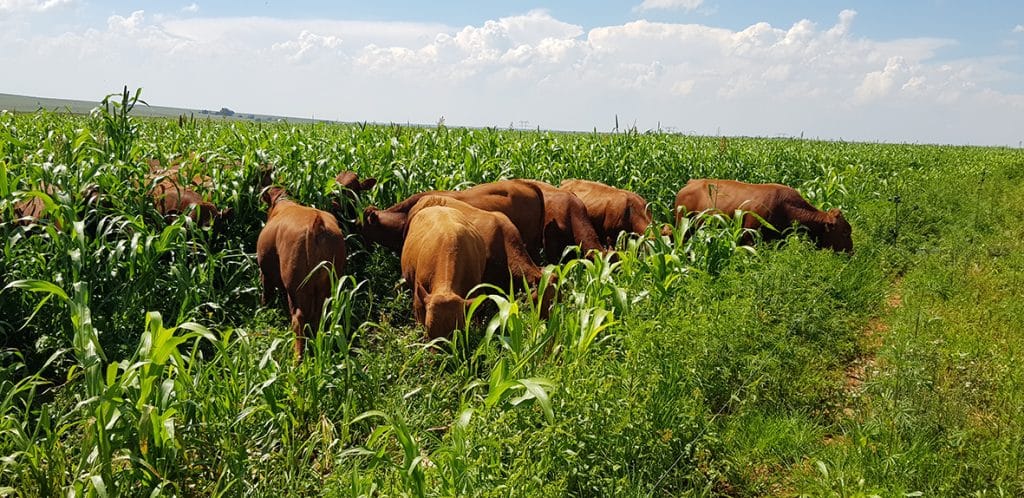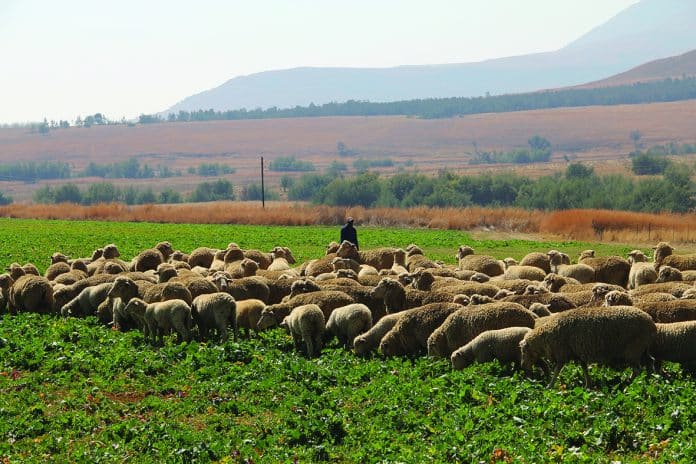Estimated reading time: 7 minutes
- Horizontal expansion in farming is becoming increasingly difficult in SA as good agricultural land is becoming more difficult to obtain.
- The only alternative, says Angus Williamson, chairperson of the KwaZulu-Natal (KZN) Red Meat Producers’ Organisation (RPOKZN), vice-president of Kwanalu, Voermol Feeds agent and breed inspector for Brangus SA, is to expand vertically.
- The starting point, if you look at vertical growth, is what your farm offers. Here, the potential and health status of the soil are critical. This goes for both your crop fields and veld.
- The next aspect to consider in vertical integration is keeping control over your product for as long as possible, or at least to add value to it before letting it go out of your hands.
- In order to utilise the full potential of a particular farm, says Williamson, it is necessary to explore all possible options.
Go big or go home is a popular motto in business, and probably very true for the business of farming. The problem, however, is that horizontal expansion is becoming increasingly difficult in South Africa, as good agricultural land is becoming more difficult to obtain due to intense competition. This is causing land prices, both in terms of buying and renting, to skyrocket.

The only alternative, says Angus Williamson of Mooi River in KwaZulu-Natal, is to expand vertically. Williamson is chairperson of the KwaZulu-Natal (KZN) Red Meat Producers’ Organisation (RPOKZN), vice-president of Kwanalu, as well as a Voermol Feeds agent and breed inspector for Brangus SA. He is also chairperson of the large-stock committee of the Royal Agricultural Society in Pietermaritzburg.
The case for vertical expansion
“The starting point, if you look at vertical growth, is what your farm offers. Here, the potential and health status of the soil are critical. This goes for both your crop fields and veld,” he points out. Vertical, as opposed to horizontal expansion, implies the maximisation of production on every available hectare. It also requires a paradigm shift from thinking in terms of product per hectare to thinking in feed per hectare.
“A good example of this paradigm shift can be seen in the Bergville/Winterton area. Traditionally, this was a crop production area where the early no-till movement in the country really started and gained momentum. Soil health became a vital driving force to optimise production, of which multi-species cover crops formed an integral part.
“Over time, however, the importance of integrating a stock component also became evident. Today, if you ask a dyed-in-the-wool crop producer in this area, they will tell you that not running stock as part of their production system is simply unthinkable.”
This, says Williamson, is a good example of vertical integration. It opens up the production potential of every available hectare to sustain multiple income streams for the farming business. In this context, the notion of classifying oneself as either a crop, stock, or mixed producer becomes redundant. What you do become is a feed producer. It is up to every producer to find the sweet spot where all the various income streams converge in an optimal stream.
The starting point, however, remains the soil. “In the context of veld, it begins with a good veld management system that considers the veld types and climate of your specific region. In terms of crop production, it rests on the five pillars of regenerative agriculture, namely minimum soil disturbance, maximum soil cover, living roots in the soil every month of the year, maximum biodiversity in terms of plant species, and then the animal factor.
“All these factors combine to create a healthy environment for soil microbes to flourish. Put simply, healthy soil is equal to a healthy soil microbial population.”
Read more about how technology and sustainable farming can contain the cost-price squeeze here.
Adding value
The next aspect to consider in vertical integration, he says, is keeping control over your product for as long as possible, or at least to add value to it before letting it go out of your hands. “A good example is running your steers on cover crops instead of selling them as weaners. You might lose a bit on value per kilogram, but you gain so many kilograms, in addition to the positive effect the animals have on the soil, that it really is a no-brainer.”
Value addition also includes the ability to move outside of the traditional market trends, he says. “We know that weaner prices drop during periods when everybody is selling. If you can hold on to your weaners during those times and sell them once demand outpaces supply, that is obviously adding value to your product. Not only do you get a better price, but the animals have also increased in weight in the meanwhile.
“The big proviso, obviously, is that you need to have good and ample feed available to do this. Which brings us back to cover crops. Not only can it release some pressure on your natural veld, but it creates opportunities to exploit market trends.”

Explore all options
In order to utilise the full potential of a particular farm, says Williamson, it is necessary to explore all possible options. This, in turn, requires an open mind to explore options that might imply a total paradigm shift. It might involve incorporating different crops, or even a different type of animal, to bring you closer to the best possible feed production per hectare. Bull selection and cow type are certainly two aspects that need to be revisited.
“A paradigm shift – changing the way you think about things – is the key here. It is often said that we cannot continue the way our forebears did things. This is very true, but on the other hand our forebears did many things for which there were very good reasons. So, this open-minded evaluation of every possible practice to optimise production per hectare should also involve re-evaluating old practices that fell by the wayside.”
Listening to good advice is part and parcel of the deal. “There are so many places where you can get good advice, and it should not cost you anything. Talk to specialists, talk to old hands. They all have some gems that you can incorporate in your understanding of what best suits a particular farm and farming system, if you keep an open mind.”
In the same vein, he says, attending as many farmers’ days as possible is also good advice. Not only do you come across snippets of information that might be of value, but you also meet experts who might become a valued source of information over time.
“There is so much information available in, for example, podcasts by expert producers, that we are really spoilt for choice. My advice is to stretch your imagination by listening to people who might seem, at first, to be totally over the top. Study their arguments and find out what the motivation behind the argument is. Even if you then reject that train of thought, at least you have done it based on an informed set of criteria.”
Penny wise and pound foolish
There is a saying that you must spend money to make money, but a huge caveat is applicable, says Williamson. This is to spend money on the right things. “Buying a new tractor or planter will not necessarily improve your crop. A more productive move would be to rather spend the money on correcting the soil by putting in lime, for example. In time this will pay for the new tractor.”
Determine what exactly will make the most difference to your bottom line at a given period and spend your money to achieve that. Spending strategically, he emphasises, is the name of the game. – Izak Hofmeyr, Stockfarm
For more information, contact Angus Williamson on 082 564 5481.



